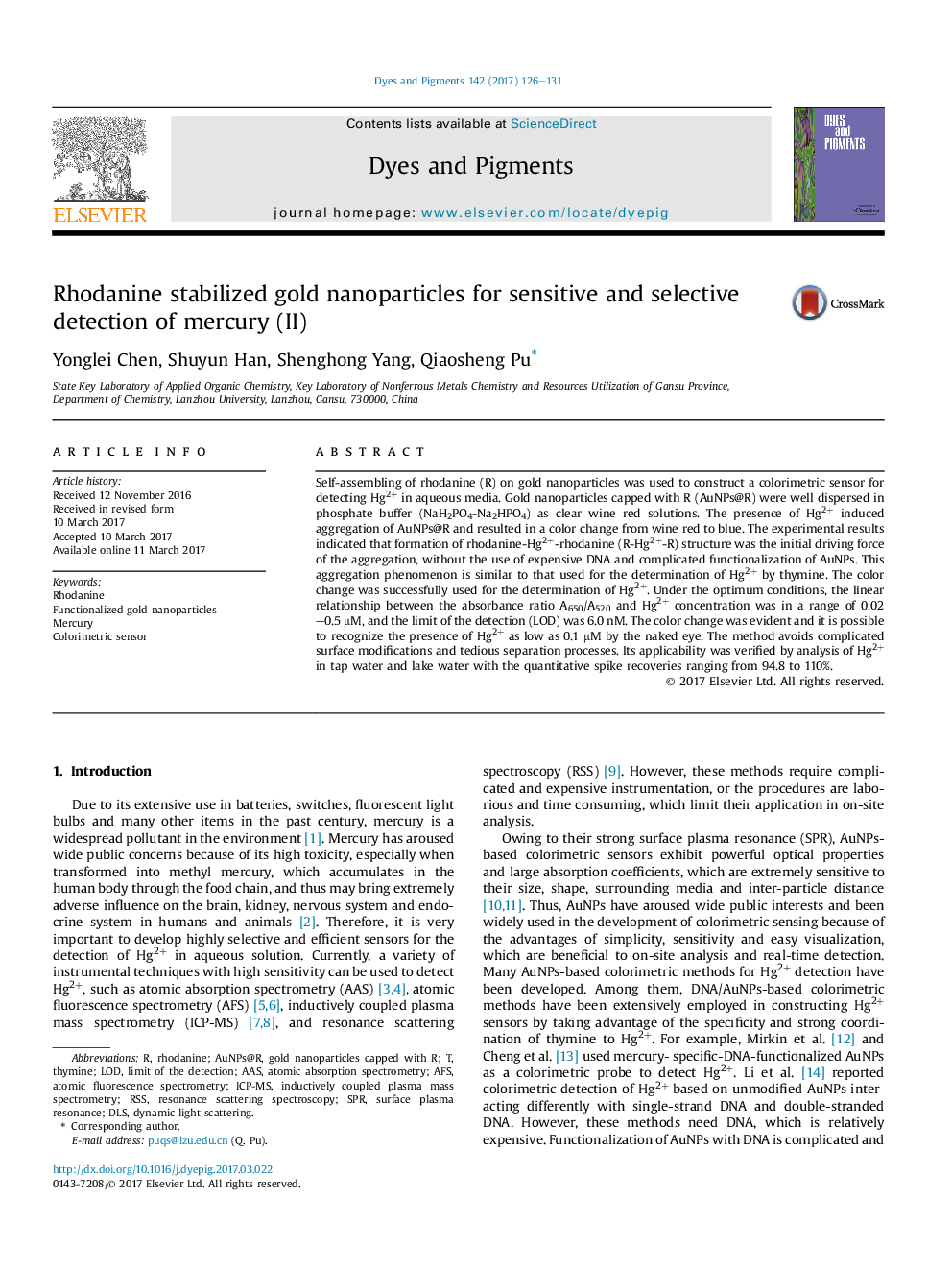| Article ID | Journal | Published Year | Pages | File Type |
|---|---|---|---|---|
| 6469351 | Dyes and Pigments | 2017 | 6 Pages |
â¢Gold nanoparticles with self-assembled rhodanine were used as a sensor for Hg2+.â¢The sensor is simple, cost-effective and sensitive with an LOD of 6 nM.â¢0.1 μM of Hg2+ could be detected with the naked eye based on the color change.
Self-assembling of rhodanine (R) on gold nanoparticles was used to construct a colorimetric sensor for detecting Hg2+ in aqueous media. Gold nanoparticles capped with R (AuNPs@R) were well dispersed in phosphate buffer (NaH2PO4-Na2HPO4) as clear wine red solutions. The presence of Hg2+ induced aggregation of AuNPs@R and resulted in a color change from wine red to blue. The experimental results indicated that formation of rhodanine-Hg2+-rhodanine (R-Hg2+-R) structure was the initial driving force of the aggregation, without the use of expensive DNA and complicated functionalization of AuNPs. This aggregation phenomenon is similar to that used for the determination of Hg2+ by thymine. The color change was successfully used for the determination of Hg2+. Under the optimum conditions, the linear relationship between the absorbance ratio A650/A520 and Hg2+ concentration was in a range of 0.02-0.5 μM, and the limit of the detection (LOD) was 6.0 nM. The color change was evident and it is possible to recognize the presence of Hg2+ as low as 0.1 μM by the naked eye. The method avoids complicated surface modifications and tedious separation processes. Its applicability was verified by analysis of Hg2+ in tap water and lake water with the quantitative spike recoveries ranging from 94.8 to 110%.
Graphical abstractSimple, cost-effective and sensitive detection of mercury (II) based on rhodanine stabilized gold nanoparticles.Download high-res image (206KB)Download full-size image
